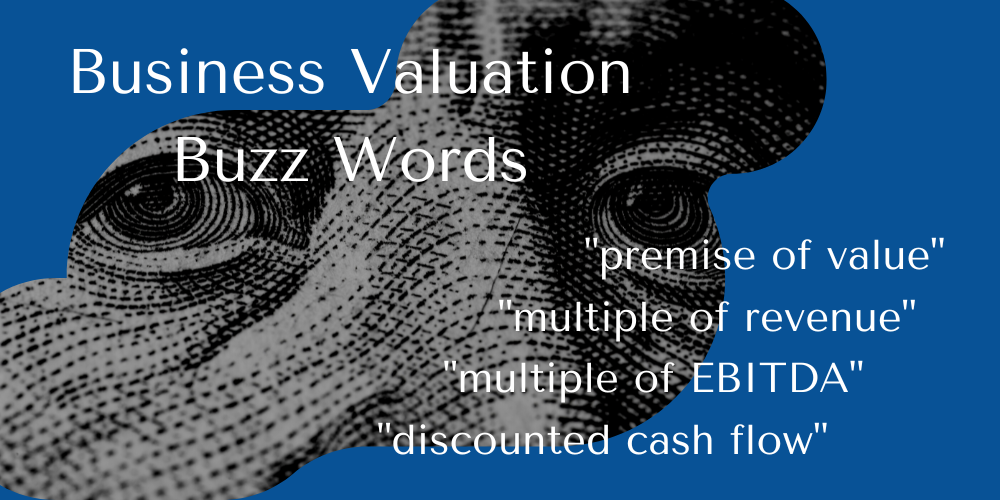Written By: Andy Gelfand
Read By: Christopher McKenna
The relationship between financial planning and the sale of your company helps to outline the importance of completing a business valuation during the planning process. Various approaches and considerations muust be taken to determine business value. though it is within best practices to remember that market activity can vary from company to company and industry to industry.
Fair market value is defined as the price at which a company changes hands in a transaction between a willing buyer and a willing seller, both being reasonably informed regarding the relevant facts about the business, and neither party being under compulsion to buy or sell. A completed transaction unequivocally determines the fair market value of the company.
However, the preparation of a business valuation for planning purposes does not have the luxury of a completed transaction to confirm fair market value; therefore business value must be estimated.
Determining an appropriate estimate of business value is often perceived to be a black box — input a bunch of financial information into a computer model and out pops the value of the business. It must be correct since it came out of a model, right? Wrong. As described below, business value is determined based on a host of subjective non-financial inputs. as well as financial information that must be considered collectively to arrive at an informed conclusion.
Business valuation chatter includes buzz words such as “multiple of revenue,” multiple of EBITDA,” and “discounted cash flow.” Many industries have their own “rules of thumb.” Retail chains can trade loosely based on a multiple of stores. The skilled nursing industry often trades in part based on a multiple of licensed beds. A valuation metric in the asset management industry is percentage of assets under management.

Ultimately though, all valuation metric are based on how much cash the company has historically generated, how much cash the company is expected to generate in the future, and the risk profile associated with realizing the expected future cash flows. After all, in business valuation as in many walk of life, cash is king!
It is worth noting that “expected stream of future cash flows” has multiple meanings. It can mean the cash flow expected to be generated by the company itself, the cash flow that the company is expected to generate by being associated with the buyer, or a combination of the two.
In researching how to value their company, business owners may have read about various valuation methodologies such as the “income method” (discounted cash flow or capitalized cash flow), “book value,” and “market comparable value” (comparison of the company to publicly-traded company metrics). One or more of these approaches are typically applicable to each business, but they must be uniquely applied to the business to develop a valuation conclusion. The application of various valuation methodologies ultimately determines an inferred multiple of EBITDA.
Businesses in the same industry typically trade in a range of multiples. For example, if the business owner’s industry currently trades in the range of 6x to 8x EBITDA, what determines if the subject company will be valued at the lower end of the range, the higher end of the range, or in between?
One of the biggest factors in determining the applicable multiple is the magnitude of the company’s EBITDA. Companies with an EBITDA less than $1 million are typically valued at a lower multiple than companies with an EBITDA between $1 million and $5 million. Similarly, companies with an EBITDA between $1 million and $5 million are typically valued at a lower multiple than companies with an EBITDA between $5 million and $10 million and so on.

Other critical factors in narrowing the range of the multiple include proprietary products or processes, intellectual property such as patents, trademarks and brands, customer concentration, depth of management, investment and maintenance of equipment and IT Systems, and the quality and integrity of the financial reporting processes, among others.
These non-financial “qualitative factors” uniquely influence the multiple. Two companies in the same industry with the same financial statements will be valued differently based on the evaluation of each company’s qualitative factors since these factors influence the perceived risk profile associated with achieving the expected future cash flows.
Business value is dynamic.
The conclusion of the current fiscal year will likely be different than the conclusion of the next fiscal year and certainly different from the conclusion of the fiscal year, two years into the future. Business value changes based on internal developments and external factors including the economy, market sentiment for the industry, supply and demand, and consolidation activity in the underlying market. As a result, re-evaluating business value from time-to-time assures that the business owner is knowledgeable about their options based on real-time information.
